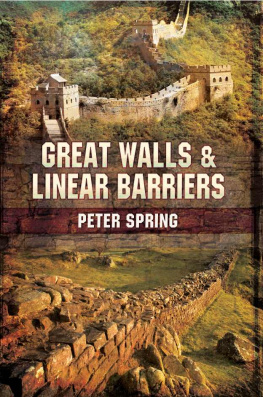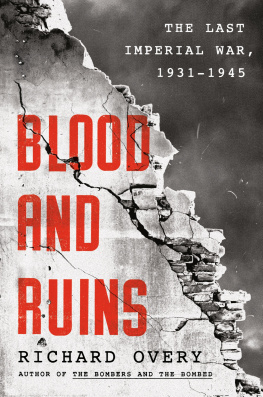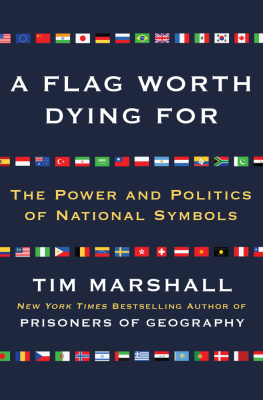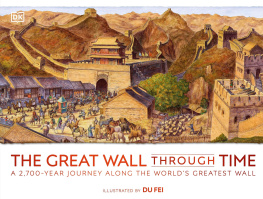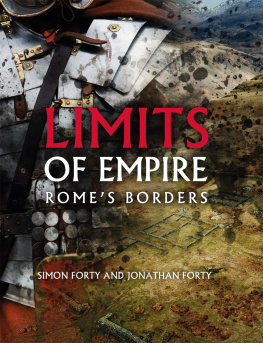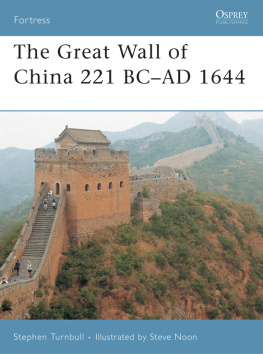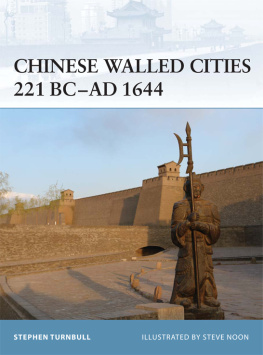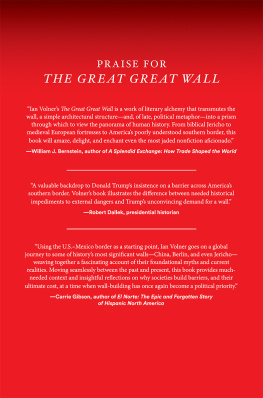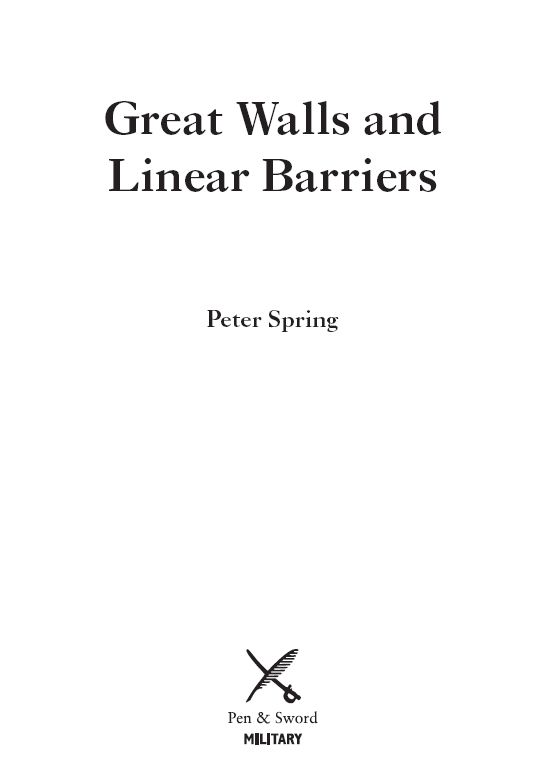
First published in Great Britain in 2015 by
Pen & Sword Military
an imprint of
Pen & Sword Books Ltd
47 Church Street
Barnsley
South Yorkshire
S70 2AS
Copyright Peter Spring 2015
ISBN 978 1 84884 377 6
eISBN 9781473853942
The right of Peter Spring to be identified as the Author of this Work has been asserted by him in accordance with the Copyright, Designs and Patents Act 1988.
A CIP catalogue record for this book is available from the British Library
All rights reserved. No part of this book may be reproduced or transmitted in any form or by any means, electronic or mechanical including photocopying, recording or by any information storage and retrieval system, without permission from the Publisher in writing.
Typeset in Ehrhardt by
Mac Style Ltd, Bridlington, East Yorkshire
Printed and bound in the UK by CPI Group (UK) Ltd, Croydon, CRO 4YY
Pen & Sword Books Ltd incorporates the imprints of Pen & Sword Archaeology, Atlas, Aviation, Battleground, Discovery, Family History, History, Maritime, Military, Naval, Politics, Railways, Select, Transport, True Crime, and Fiction, Frontline Books, Leo Cooper, Praetorian Press, Seaforth Publishing and Wharncliffe.
For a complete list of Pen & Sword titles please contact
PEN & SWORD BOOKS LIMITED
47 Church Street, Barnsley, South Yorkshire, S70 2AS, England
E-mail: enquiries@pen-and-sword.co.uk
Website: www.pen-and-sword.co.uk
Contents
Maps and Linear Barrier Lists
Acknowledgements
T his book has been a long time in gestation although its completion owes much to an intense period of activity made possible by semi-retirement. Essentially it would not have happened, however, without the impulse from my wife, Anna, who challenged me to stop going on about new walls being built at a time when, after the fall of the Berlin Wall, received wisdom was we were entering an age without walls and actually try to write about them. Also, the encouragement and advice of David Harrison was essential to completing a proposal and then commenting on the text, as well as keeping up the momentum of the work. Thank you also to Philip Sidnell of Pen & Swords for accepting the proposal, Barnaby Blacker for editing, Matt Jones for production and Alex Swanton for the maps. I am very grateful to Lawrence Joffe for his expert reading the text.
It would have been impossible to have written this book earlier than the 21st century. Most of the walls and linear barriers were found on the basis of certain hunches as to where to look which were then investigated using tailored internet search terms or following certain geographical or man-made features for example, Roman roads on online maps. The anonymous contributions on Wikipedia were invaluable to background research and one can only recompense by making a contribution to its costs. Email made it possible to contact experts and I am grateful for the replies from, Alexandru Madgearu, Alison Gascoigne, Sren Stark, Eberhard Sauer and Jim Crow. Thank you for the time and materials given to me by the National History and Archaeology Museum Constana (the site of ancient Tomis and Ovids exile) which is near the Valurile lui Traian of the Dobrogea. (A visit is recommended to get a flavour of the extraordinary and largely unrecognised archaeological wealth of Romania.)
The internet provided images of linear barriers almost entirely unavailable in published texts. I am particularly grateful to the fascinating online Great Wall Forum which expands the subject matter of walls visually far beyond any conventionally published sources. Thank you to the following for providing images: Sergey Bieloshapko, Seamus Cullen, Brian Feldman, Elena Filatova, Geopan, Andrey Kolchugin, Andreas C. Lehmann, Kin Jim, Nagy, Brian Thomas Mcelherron, Pascal and Nathalie Mercier, M. M. Miles, Adrian Mihlianu, David Pettegrew, Leonid Rosca, Eberhard Sauer, Kim F. Siefert and Mirko Slak. I am grateful to the following for images available through the Creative Commons license: Maxim Bielushkin, Btxo, OlofE, Wolfgang Kuhoff, Pakeha, Heinrich Stuerzl, Lszl Szalai, Frank Vincentz, Vity OKM, www.derbent.ru , 1.2 Tadam. Thank you to my sister Emma for a drawing of the ancient Egyptian wall frieze.
The maps are an amalgam drawn from multiple sources with a fair bit of deduction from various texts. There is a lot of otherwise unavailable material on foreign language websites. I have tried to give the sources in the bibliography and apologise for any oversights. The maps are very much work in progress and errors are entirely my own responsibility. Their value lies hopefully in revealing broader patterns rather than the precise location of individual linear barriers.
Finally, on a personal basis, I must say thank you to my wife and children for putting up with long absences and distracted presences while writing this book and to David Harrison for his patience accompanying me on various foreign trips which demonstrated that linear barriers, despite having been very substantial objects, can prove extremely elusive on the ground.
Technical Matters
Names
M any linear barriers have more than one name. It would be comforting if one could impose some over-arching consistency as to which to use but this is not really possible with a subject that covers lengths of time and space where the units measure in thousands. The best that usually can be done is to take the most familiar or common name and be consistent in its use. This, however, can result in some inconsistencies. For example, the linear barriers on the Great Hungarian Plain to the north and east of the Danube are collectively known by the Hungarian name, the Csrszrok. Yet this includes a linear barrier described in French as the Petit Foss. Near to the Csrszrok in Serbia lie a number of earthworks that are most commonly known by the German collective name Rmerschanzen. As said, the only consistency reasonably possible is to be consistent in the use of one name in this text.
Some linear barriers are only known in different scripts. For example, there are linear barriers in the Ukraine which are only described in Cyrillic, for example, , or in direct translation from Ukrainian, Trayanov Vali Podnestrovya. Since this linear barrier has only been found in Ukrainian texts the direct transcription will be used.
An apology will have to be made in advance as sometimes the use of names may inevitably look somewhat confusing. For example, the Roman Emperor who conquered Dacia is generally known as Trajan. Walls attributed to him in Romania and the Ukraine are known respectively as Valul lui Traian and, in transcription, as Trayanov Vali. Therefore, in the same section of this book there may be three spellings.
Distances
Distances will be given for simplicity in kilometres and metres unless there is an explicit mention of a measure like a Roman mile. Most numbers come with a strong health warning as those linear barriers which have survived at all have often lost significant sections or were never originally continuous. Also, it is uncertain precisely how long were some distances used in ancient texts such as the danna , beru and parasang , as they were not absolute lengths but measures of how far it was possible to travel in an amount of time (in itself likely to be an estimate in the absence of portable time pieces) which varied hugely according to terrain.
Names and distances in quotations
Quotations from primary or secondary sources may use spellings and measurements that are different to those standardised in the rest of this book. Generally, the form used in the quotation will be respected. This may, however, result in different spellings of the same person or entity within close proximity.
Next page
